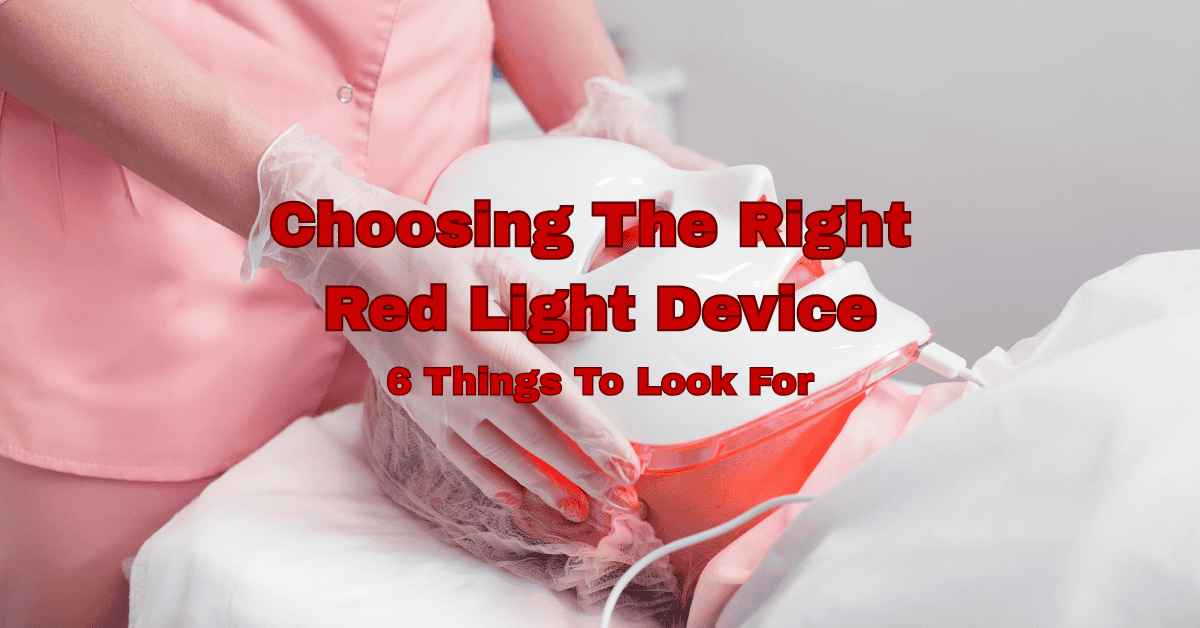Choosing the right red light therapy device is essential for achieving safe, effective, and lasting results. With so many options available, it’s important to focus on features that are supported by research and recommended by dermatology experts. This guide highlights the six most important features to consider, so you can confidently select a device that fits your needs and delivers real benefits.
Key Takeaways
- Choose a device with clinically proven wavelengths for your skin or wellness goals.
- Prioritize optimal light intensity (irradiance) for effective, efficient treatments.
- Match device size and shape to your target area and lifestyle.
- Look for FDA clearance, quality construction, and strong customer support.
- Favor user-friendly controls and clear instructions for easy at-home use.
- Consider extra features like adjustable settings or multiple light modes for flexibility.
1. Clinically Proven Wavelengths: The Foundation of Results
The wavelengths emitted by a red light therapy device determine its effectiveness. According to the American Academy of Dermatology and Cleveland Clinic:
- 630–680 nm (red light) is ideal for skin rejuvenation, collagen production, and anti-aging.
- 800–850 nm (near-infrared light) penetrates deeper, supporting muscle recovery and pain relief.
Some devices combine both ranges, allowing you to target both surface and deeper tissues. For facial skin improvement, prioritize devices in the 630–680 nm range. For broader wellness or muscle recovery, look for a device that includes near-infrared wavelengths as well.
Related: 7 Proven Benefits of Red Light Therapy for Your Face2. Light Intensity and Irradiance: Effective Power Without Overheating
Light intensity, measured in milliwatts per square centimeter (mW/cm²), affects how much energy reaches your skin and how quickly treatments work. According to Healthline and leading device manufacturers:
- Mid-range irradiance (30–80 mW/cm²) is effective and safe for most at-home facial and skin treatments.
- Higher irradiance (80+ mW/cm²) can shorten treatment times but may cause excess heat or discomfort.
- Even light distribution is crucial to avoid uneven results or irritation.
For facial use, a device in the 20–80 mW/cm² range is generally both comfortable and effective.
Related: 10 Myths About Red Light Therapy for Face—Busted!3. Coverage Area and Device Shape: Fit for Your Routine
When choosing a red light therapy device, it’s important to consider not only the technology but also the physical design. The size and shape of your device should match your treatment goals and lifestyle. A device that fits your needs will make your sessions more convenient and help ensure you stick with your routine over the long term.
- Masks and panels are ideal for treating the entire face or larger areas in one session.
- Handheld wands or smaller devices are better for spot treatments or travel.
- Full-body panels are best for those seeking broader wellness or muscle recovery benefits.
If you travel often, a compact device or wand may be best; for regular facial sessions at home, a mask or panel can save time and ensure full coverage.
4. Quality, Construction, and Safety Certifications
Device quality and safety certifications are critical for both performance and peace of mind. A well-built device not only lasts longer but also ensures safety and consistent results. Before making a purchase, take a close look at the manufacturer’s credentials, build quality, and user feedback.
- FDA clearance or medical-grade certifications to ensure the device meets safety standards.
- Solid build quality-sturdy materials, reliable LED bulbs, and robust construction.
- Positive user reviews for insights on durability, performance, and customer support.
Quality devices may cost more upfront but deliver better results and peace of mind over time.
5. User-Friendly Controls and Instructions
Ease of use is essential for sticking with your red light therapy routine. Even the most advanced device won’t deliver results if it’s too complicated or uncomfortable to use. Look for features that make daily treatments simple and enjoyable, so you’re more likely to use the device consistently.
- Simple controls and clear instructions for hassle-free operation.
- Adjustable settings (timer, intensity, or light mode) to customize treatments.
- Comfortable design-especially for masks or wearables-to encourage consistent use.
A device that’s easy and comfortable to use will help you maintain a regular routine and see better results.
6. Versatility and Customization Features
As your skincare and wellness needs evolve, having a versatile device can be a major advantage. Extra features can add value and flexibility, making your investment more worthwhile and allowing you to adapt your routine over time.
- Multiple wavelength modes let you switch between red and near-infrared light.
- Pulsing or continuous light options can be tailored for specific skin or tissue needs.
- Size options (small, medium, large panels) help match the device to your treatment area.
Versatile devices can serve multiple users or adapt as your skincare and wellness goals evolve.
Conclusion
Selecting the right red light therapy device is about more than choosing the most popular model-it’s about finding features that align with your goals, comfort, and lifestyle. Focus on clinically proven wavelengths, optimal intensity, and a device shape that fits your routine.Don’t overlook build quality, safety certifications, and user-friendly controls, as these factors ensure safe, effective, and enjoyable treatments.
Versatile features like multiple light modes or adjustable settings can further enhance your experience and results. For more guidance on routines, safety, and device selection, explore our complete beginner’s guide to red light therapy for the face.
References:
- American Academy of Dermatology, “Light Therapy for Skin”
- Cleveland Clinic, “Red Light Therapy: Uses and Benefits”
- Healthline, “Red Light Therapy: Effectiveness, Benefits, and Risks”
- FDA, “Laser Products and Instruments: Safety and Regulations”

Leave a Reply